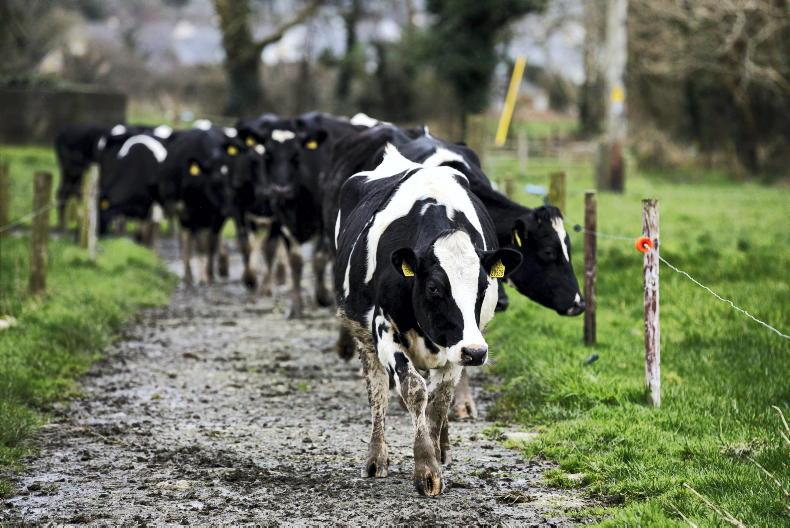What you do in the autumn in terms of building grass covers will largely influence what grass you have in springtime, Dr Áine Murray, a Teagasc researcher based at Moorepark, told Teagasc’s dairy conference in Limerick last week.
“The autumn closing rotation is really the start of the grazing season. Your peak farm cover should occur on 1 October.
“What we saw this year was that farmers weren’t able to build peak covers in 2024.
“This week on PastureBase, the average farm cover is at 600kg DM/ha which is behind that target for 1 December of a minimum of 700kg DM/ha,” she said.
Murray highlighted the importance of closing paddocks at the correct target in order to have enough grass in spring – when grazed grass is of much more value to cows compared to the autumn.
A peak farm cover of at least 1,000kg DM/ha should be achieved on 1 October, followed by a closing cover of 700kg DM/ha on 1 December at housing.
This will, according to Murray, allow farmers to turn out in February at 1,000kg DM/ha followed by a second rotation sometime in April at 650kg DM/ha.
Consequences
“If you open at an average farm cover of 1,000kg DM/ha versus a lower cover of 850kg DM/ha and if there was no intervention taken and you end up finishing your first rotation on a lower farm cover of 400kg DM/ha instead of the ideal 650kg DM/ha – there are subsequent consequences thereafter.
“We see that there is a 20% reduction in daily growth rate in April and 12% reduction in growth rate in May.
“If farmers end up opening at that lover cover, they should supplement with silage, Murray said.






 This is a subscriber-only article
This is a subscriber-only article










SHARING OPTIONS: